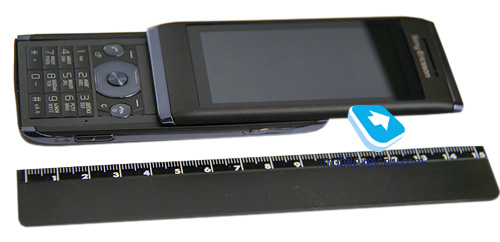

It is perhaps a surprise to find that the Aino doesn’t feature a 3.5mm headphone jack given that it is pitched squarely as a multimedia beast. Our Aino came with an 8GB microSD card in place, so it is ready and willing to get funky with all your tunes on the move. Whilst being able to access your media and use the camera is nice, it seems like a missed opportunity not letting you browse your messages for example. It is a shame that you can't do more via touch. Sadly, this touch menu has its own design, dropping the XMB, but it does give you access to media without opening the phone. This is the only time that the Aino does accept touch however (except to take incoming calls and set camera controls), and gives you access to the camera, photos, music, video and radio. You also get a separate media interface that is operated by touch control when the phone is closed. The main media menu employs Sony's XMB, which is great to use and mirrors the PSP and PS3 layout. You get the feeling that things are no longer cohesive: you have Entertainment, Media, Music Player menus, but they don't contain all the options for media control. With Apps now taking centre stage on many phones, Sony Ericsson still has "Applications" languishing in "Organiser". It is looking a little tired, as essentially the layout and content of these menus hasn't changed over the years, it's just expanded. The menu system is typical Sony Ericsson stuff, with a main menu divided into icons giving you access to all the main areas. Our review version was finished in black throughout and it looks like a cool phone overall. It does feel like a good quality keyboard and feels like it will last the length of your contract. The keyboard is pretty average for Sony Ericsson's handsets, giving a reasonable response, but not the best for fast action messaging. Slide the screen up and it opens with a nice crisp action, exposing the 12-key keypad and usual range of control buttons across the middle. The design of the phone is pretty sleek: the front is free from buttons with the screen closed and moving around the body the only other buttons are the lock on the top and the volume rocker and camera button on the right-hand side.

The screen is touch-enabled, but the Aino is a hybrid device, meaning sometimes you can touch and sometimes you can't, which we'll come to later.

You'll find a 3-inch widescreen display with a 432 x 240 pixel resolution. Out of the box you get a slider handset measuring 104.0 x 50.0 x 15.5mm. The phone drops to the Walkman and Cyber-shot branding, but punches hard in both the camera and multimedia sectors, including Remote Play on the PlayStation 3. (Pocket-lint) - Back at Mobile World Congress 2009 Sony Ericsson introduced us to the concept of Entertainment Unlimited, typified here by the Aino.


 0 kommentar(er)
0 kommentar(er)
